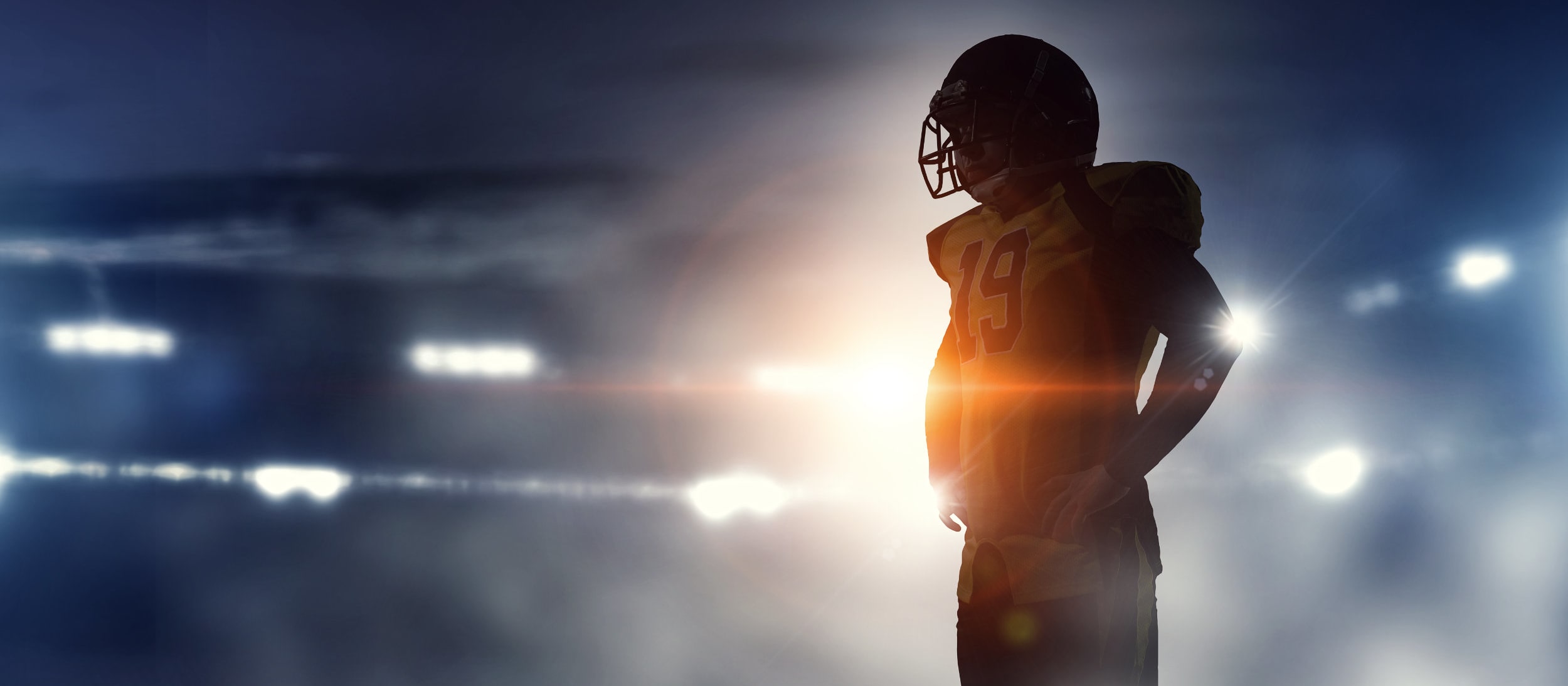Several big-name players made early exits in Week 3, leaving many fantasy owners short-handed with nothing but a low-point total and a loss to comfort them. However many of the players that did leave early, including St. Louis' Steven Jackson and Baltimore's Ray Rice, received good news the following day and aren't expected to remain sidelined for long.
Jackson was on his way to impressive day, rushing for 58 yards and a touchdown in St. Louis' Week 3 win over Washington. However, a groin injury forced him from the game early in the second quarter and he did not return. The former Pro Bowler revealed via his Twitter account that a MRI revealed a minor strain and he has already spent extensive time receiving treatment.
The groin is a muscle group known as the adductors and is responsible for bringing the leg toward the midline of the body. As we discussed last week with Atlanta's Michael Turner, a strained groin creates problems for running backs while making cuts and transferring body weight when avoiding tackles. Jackson is considered day-to-day but it is hard to imagine that a guy who played most of last season with a herniated disc will miss Sunday's matchup with the Seahawks. Kenneth Darby, who filled an admirably with 49 yards and score of his own, would assume the starting role if Jackson cannot suit up.
Rice underwent a MRI on his injured right knee that did not reveal structural damage but did
Several big-name players made early exits in Week 3, leaving many fantasy owners short-handed with nothing but a low-point total and a loss to comfort them. However many of the players that did leave early, including St. Louis' Steven Jackson and Baltimore's Ray Rice, received good news the following day and aren't expected to remain sidelined for long.
Jackson was on his way to impressive day, rushing for 58 yards and a touchdown in St. Louis' Week 3 win over Washington. However, a groin injury forced him from the game early in the second quarter and he did not return. The former Pro Bowler revealed via his Twitter account that a MRI revealed a minor strain and he has already spent extensive time receiving treatment.
The groin is a muscle group known as the adductors and is responsible for bringing the leg toward the midline of the body. As we discussed last week with Atlanta's Michael Turner, a strained groin creates problems for running backs while making cuts and transferring body weight when avoiding tackles. Jackson is considered day-to-day but it is hard to imagine that a guy who played most of last season with a herniated disc will miss Sunday's matchup with the Seahawks. Kenneth Darby, who filled an admirably with 49 yards and score of his own, would assume the starting role if Jackson cannot suit up.
Rice underwent a MRI on his injured right knee that did not reveal structural damage but did show a significant bone contusion. Fantasy owners would be unwise to question Rice's toughness and say a bone bruise doesn't sound like a big deal. Bone contusions tend to last longer than a soft tissue contusion and are generally more painful. They occur when the periosteal tissue is damaged following a direct blow or, like in the case of Rice, a fall. Bone bruises are not classified as a fracture but are often accompanied with small breaks in the fibers of the bony cortex. The body's natural defense system treats a bone contusion just like it would a break, restoring the integrity of the injury site by laying down new cells and tissue. Fortunately the recovery time can be much quicker and the Ravens are optimistic Rice will be in the backfield when they take on the Steelers in Week 4. If Rice needs any advice on how to cope with the injury, he can turn to his newest teammate, receiver Anquan Boldin. Boldin suffered a similar injury in 2005 while with the Cardinals and missed two games nursing the ailment. If Rice can't go, Willis McGahee would take over in the backfield. However even if Rice is ready by Sunday, he faces a suffocating Pittsburgh defense and remains a risky start.
Detroit's Jahvid Best followed up his Week 2 explosion with a whimper rushing for 26 yards before exiting with a toe injury. The injury is being classified as Grade II turf toe. Turf toe is actually a hyperextension injury of the big toe of the foot. The injury is considered a ligament sprain and is graded similarly to an ankle sprain. A Grade II sprain means the ligaments surrounding the joint have been overstretched and partially torn.
Turf toe is particularly painful when pushing off the foot while accelerating or jumping and can be extremely hampering to running backs. Furthermore turf toe tends to linger and can take a while to completely heal. Tape jobs and modifications to the athlete's shoe may help make the pain tolerable but the injury is likely to bother Best for a decent stretch of time. He plans on playing in Week 4 if the pain is bearable but fantasy owners should temper their expectations. Maurice Morris would take over if Best does not play with former starter Kevin Smith likely to return from knee surgery to help shoulder the offensive load.
The once-crowded running back stable in New England is looking thinner as yet another member of the Patriots backfield has succumb to injury. Fred Taylor is being slowed by a toe injury while veteran Kevin Faulk is already on the injured reserve after tearing his anterior cruciate ligament (ACL). With Laurence Maroney shipped off to Denver, third-year back BenJarvus Green-Ellis will get the bulk of the carries with Sammy Morris and Danny Woodhead getting the occasional rep. The Pats are notorious for ignoring their running backs but perhaps the injuries and trades will clear up the situation and force coach Bill Belichick to focus on using one primary running back.
Houston wide receiver Andre Johnson continues to nurse a high ankle sprain initially suffered in Week 2 and aggravated in Week 3 against the Cowboys. There is a substantial difference in a high ankle, or syndesmotic sprain, than the more common inversion or eversion sprain. Let's once again go over the difference.
In a typical ankle sprain, the ligaments located on the lateral or medial aspects of the ankle are stressed and sprained when the foot is forced into inversion or eversion. The injury is often accompanied by bruising and swelling and can take days or weeks to heal depending on the severity of the sprain. However a high ankle sprain occurs in a different joint all together, the distal tibiofemoral joint. Here the ends of the lower leg bones, the tibia and fibula, form what is known as the ankle mortise. At the mortise, a sturdy ligament known as the interosseous ligament stretches across the joint, connecting the two bones. Two other ligaments, the anterior and posterior tibiofibular ligaments, assist in stabilizing the joint. If any of these particular ligaments are sprained, the injury is characterized as a high ankle sprain. Treatment for these sprains is the same as a normal medial or lateral ankle sprains but they generally take longer to heal. Johnson has given no indication that he will miss time with the injury but understand the ankle is vulnerable to reinjury and aggravation and could easily remove him from a game.
San Diego running back Ryan Mathews is also dealing with a high ankle sprain that kept him out of Week 3. Mathews believes his chances of playing in Week 4 are good but let the rookie get through practice before you plug him. Mike Tolbert will continue to start if Mathews cannot go with Darren Sproles seeing limited action.
Jeff Stotts is a Certified Athletic Trainer, MAT, PES and the Injury Analyst for Rotowire.com. You can follow him on twitter @RotoWireATC.




























